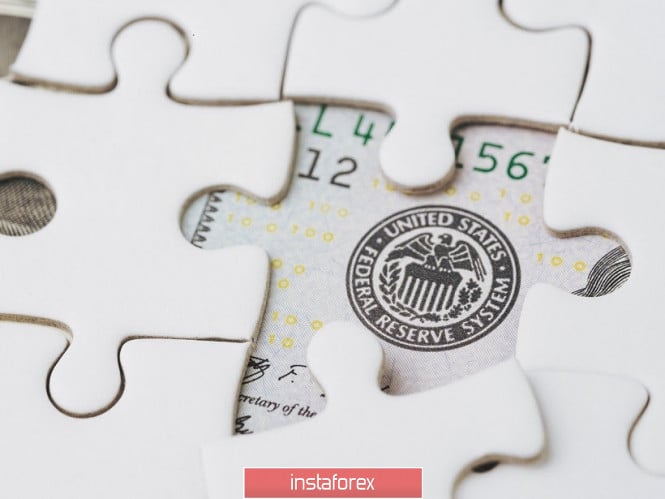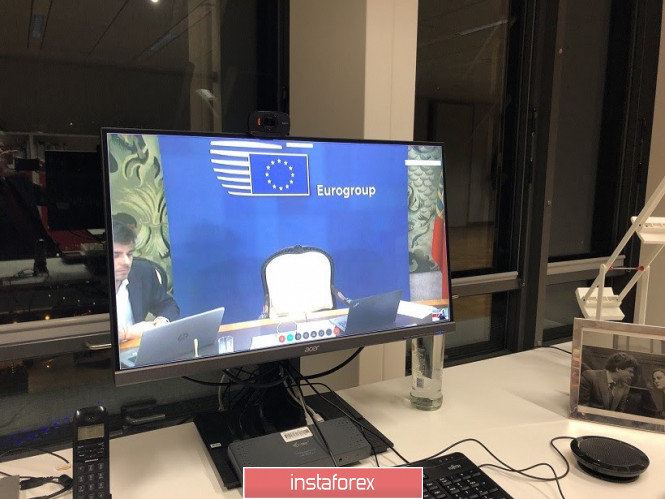The euro-dollar pair received unexpected support today, after which the bulls were able to test the ninth figure and even approach the resistance level of 1.0950 (the Tenkan-sen line on the daily chart). Although there were no prerequisites for such price spikes in the morning: traders froze in anticipation of new negotiations between the EU finance ministers, and the euro-dollar pair, respectively, fluctuated in a narrow price range, reacting sluggishly to the accompanying rumors and assumptions. But, as it often happens in the foreign exchange market, the situation changed after the Federal Reserve unveiled a program to help the USeconomy. After this, dollar bulls lost their footing.

The package provides loans to businesses and households, as well as support for municipal debt obligations. As the Fed noted, households and companies (representatives of both small and large businesses), as well as local authorities will receive assistance. First, the regulator will create a mechanism to support the lending fund worth $350 billion – this step is part of the overall package of incentives totaling two trillion dollars (it was approved in the previous month). Second, the Fed will support local authorities, both at the state and municipal levels. The aid will be provided through loans worth $500 billion. In addition, members of the Fed created a new Main Street Lending Program worth $600 billion – to help medium-sized companies (the number of employees should not exceed the 10,000 mark, and annual revenues in the pre-crisis period should be less than $2.5 billion). The essence of the program is to provide loans for four years with deferred principal and interest for a year. The regulator also expanded primary and secondary lending to corporations and a program of term loans secured by asset-backed securities. Under another mechanism, the regulator will buy short-term bonds worth up to $500 billion directly from states, counties and cities.
After the US central bank announced the new measures, Fed Chairman Jerome Powell commented on the current situation during his speech, which was held online. Following his reputation, the Fed chief tried to maintain a balance in his rhetoric. On the one hand, he said that the US economy will show "very strong weakness" in the second quarter. He also warned of a sharp rise in the unemployment rate. By the way, the figures published today quite eloquently illustrated his words. The number of applications for unemployment benefits is growing at a tremendous pace for the third consecutive week: this figure jumped to three million the week before last, to 6.8 million last week, and it came out at 6.6 million today. And although the latest Nonfarms showed an increase in unemployment to 4.4%, in fact, the situation is much worse now (judging by the growth rate of the number of applications mentioned above, the real unemployment rate may be at the level of 10-12%).
Still, Powell tried to "sweeten the pill." In his opinion, the US economy will recover at the same rapid pace as it is now falling down. He also praised his colleagues, expressing confidence that the Fed's actions have contributed to improving market conditions. Well, in the end, he suggested that the situation will normalize in the second half of the year, but in the meantime, the Fed is ready to"lend a support shoulder".
The market has reacted quite volatile to recent events. First of all, the level of anti-risk sentiment decreased - the dollar as the main protective asset began to lose positions in all pairs. Indirect support for the EUR/USD bulls was provided by the oil market, where a truce is also brewing: according to one information source, Russia is ready to reduce oil production by 1.6 million barrels per day, according to other data, Saudi Arabia and Russia have agreed on a stronger reduction in oil production. Today, during a video conference, key OPEC+ players will try to find a compromise solution, and, according to many experts, they will be able to come to an agreement. Such prospects also put pressure on the greenback, as overall demand for safe haven currencies declined.
Nevertheless, despite the seemingly unambiguous fundamental background, it is still not worth rushing to trade decisions on the EUR/USD pair. The fact is that the next online negotiations between the finance ministers of the EU countries started today. Officials will again try to agree on a plan to support the European economy. There are conflicting rumors around this event – according to one information, an agreement will still be reached today (although negotiations may drag on until tomorrow morning), according to another information, representatives of the South (Italy, Spain) still insist on crown bonds, while representatives of the North (Germany, the Netherlands, Finland, Estonia) are against this idea, defending other mechanisms.

And here it is worth noting that any outcome of these negotiations will provoke strong volatility for the pair. The European currency will either strengthen its success against the dollar and enter the 10th figure, or lose all the positions it has won and plunge to the local low of 1.0763. It is also worth remembering that due to low liquidity (many European markets will be closed because of Catholic Good Friday tomorrow) reactions can be too rough, so at the moment, it is better to wait and not play the guessing game.
The material has been provided by InstaForex Company - www.instaforex.com